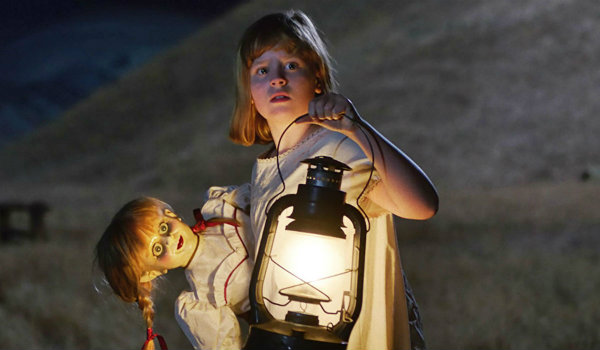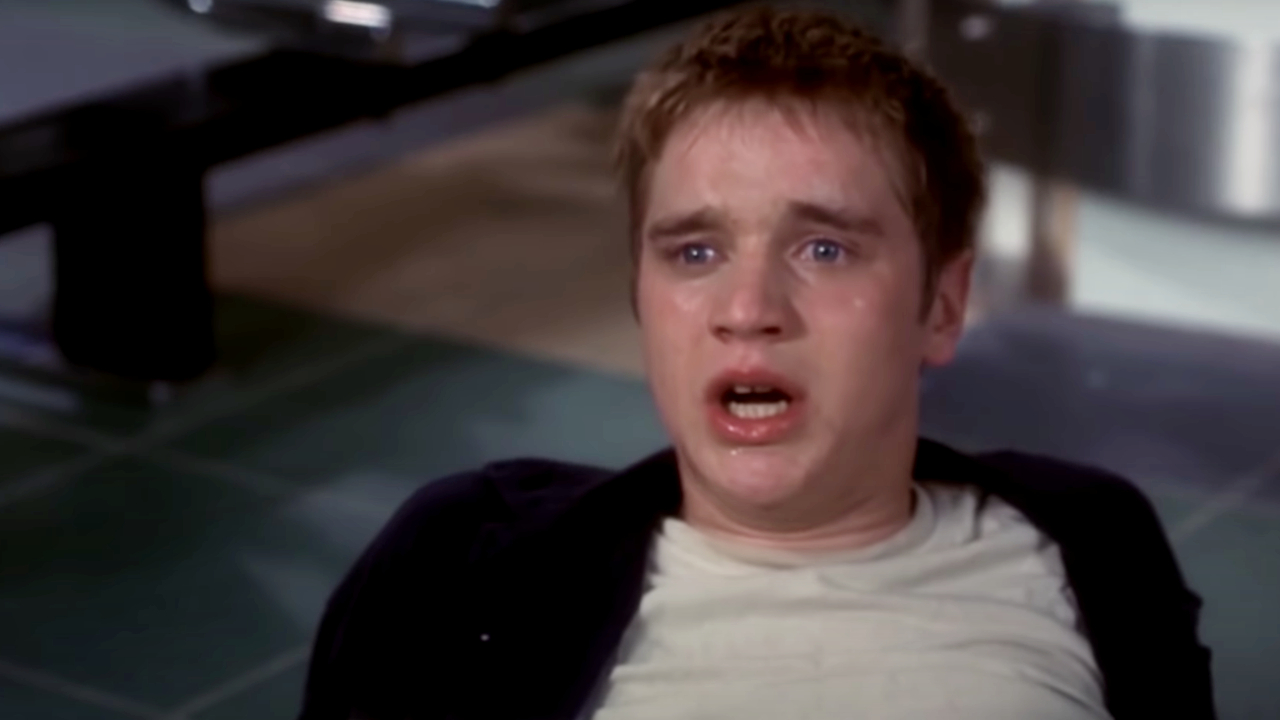Creepy dolls have always held a special place in the hearts of horror fans. Whether it's the wisecracking Chucky from the Child's Play series or the clown doll from Poltergeist; scary movies and creepy kids' toys go hand in hand. However, horror fans have never seen anything quite like The Conjuring's Annabelle, and her franchise has just taken a significant leap forward by taking a step back in time. On that note, David F. Sandberg's Annabelle: Creation isn't just one of the best entries in the growing Conjuring universe; it's also one of the best horror films of the last few years and definitive proof that the Lights Out director is just getting started as a master of the genre.
Taking place a decade before the events of the original Annabelle (and long before she fell into the capable hands of Ed and Lorraine Warren), Annabelle: Creation chronicles the birth of the titular doll, as well as her first set of victims. When Samuel (Anthony LaPaglia) and Esther Mullens (Miranda Otto) lose their young daughter Annabelle in a freak accident, they turn their remote farmhouse into a home for orphaned girls in an attempt to fill the void. However, things soon take an incredibly dark turn at the Mullens house as a dark force begins to take a liking to best friends Janice (Talitha) and Linda (Lulu Wilson), and the girls find themselves in a desperate battle to save their souls.
The first thing that you will notice while watching Annabelle: Creation (aside from how much better it is than the original) is how much more conventional of a horror movie it is than the film that preceded it. Gone is the Los Angeles apartment setting and 1960s counterculture atmosphere, which has been replaced by a folksier 1950s Middle America aesthetic. Although it's somewhat more familiar than the original Annabelle within the grand scheme of the horror genre, it also helps create a much better sense of isolation from the outside world, as well as a constant feeling of dread.
While that may cause the film to lose a few originality points among horror fans, Annabelle: Creation more than makes up for it when we look at the sheer skill in execution -- none of which would be possible without the deft filmmaking sensibilities of David F. Sandberg. Seriously, this guy continues to prove that he's one of the genre's best up-and-coming directors. Using a few simple and practical techniques that he perfected with his work on last year's Lights Out, Sandberg keeps the film's plot moving at breakneck speed without ever sacrificing the pacing of a scene. Horror is a legitimately hard genre to pull off, and it's fascinating to watch Sandberg maximize Annabelle: Creation's scares with little more than an out of focus figure lurking in a background, or the sound of footsteps racing up the stairs in a darkened house. Make no mistake; there's blood in this film, but Annabelle: Creation's main appeal is that sustained tension that Conjuring films do so well.
The beauty of these scares comes from Sandberg's ability to use the Annabelle: Creation's setting in an economical fashion. Not unlike Fede Alvarez's Don't Breathe, Creation uses every square inch of its farmhouse setting to maximize the number of scares in a three-dimensional manner. It's not just a matter of what's lurking in a shadow behind you. In the world ruled by Annabelle, evil can strike from above, below, or right in front of you at any given time, and the film almost always finds a way to make every scare (even the predictable ones) work without feeling contrived.
It's also worth acknowledging that, within those terrifying moments, David F. Sandberg has once again proven that he's a master of working with child actors. Although the performances of the adults in Annabelle: Creation can sometimes leave a bit to be desired, the film is anchored by two powerhouse performances by Talitha Bateman (the sister of Lights Out's Gabriel Bateman) and Ouija: Origin of Evil's Lulu Wilson. As two best friends fighting to stay together in the face of unspeakable evil, these actresses exhibit fantastic chemistry, and they both do a phenomenal job of conveying fear, strength, and sadness in the film's most intense scenes. Getting strong performances out of kids is not a simple task for most filmmakers, but it's easy to see why Warner Bros. lined up Sandberg to direct the Shazam solo movie. He knows how to work with these youngsters and deliver results.
That said, not all of Annabelle: Creation's scares land in a way that feels earned. Like many entries in The Conjuring universe, Creation suffers from a third act problem in which the scale of the threat posed by the ominous force abruptly spirals out of control. At that point, the movie often goes more for terror thrills than the nail-biting tension that makes the first two acts work so well, and the film starts to place a heavier emphasis on CGI and direct shots at monsters to get the audience riled up. This is ultimately a minor quibble when we look at how well Annabelle: Creation is directed, but it underscores an issue that every Conjuring property will need to acknowledge in the future. Much like in the comic book movie genre, not every horror movie needs to end on a big and loud note.
With all of that considered, Annabelle: Creation is easily one of the better installments in the burgeoning Conjuring universe, and it even features a handful of moments that support the case that it's the best of the bunch. This sub-franchise got off to a rocky start in 2014, but David F. Sandberg has handily turned Annabelle into one of the modern horror genre's best properties -- even if a few of the movie's later scares don't land. If you consider yourself a horror fan in any capacity, then put this terrifying prequel at the top of your "must watch" list.
Originally from Connecticut, Conner grew up in San Diego and graduated from Chapman University in 2014. He now lives in Los Angeles working in and around the entertainment industry and can mostly be found binging horror movies and chugging coffee.












